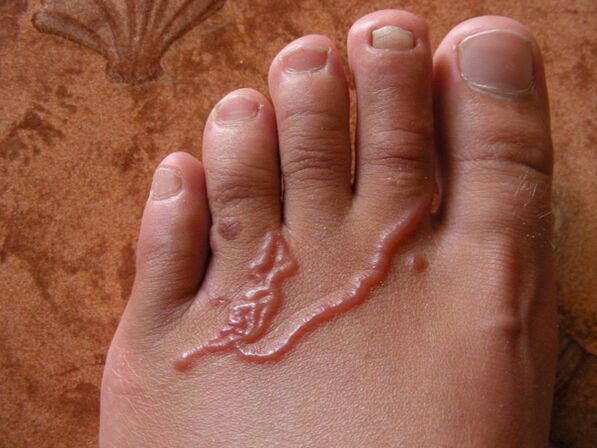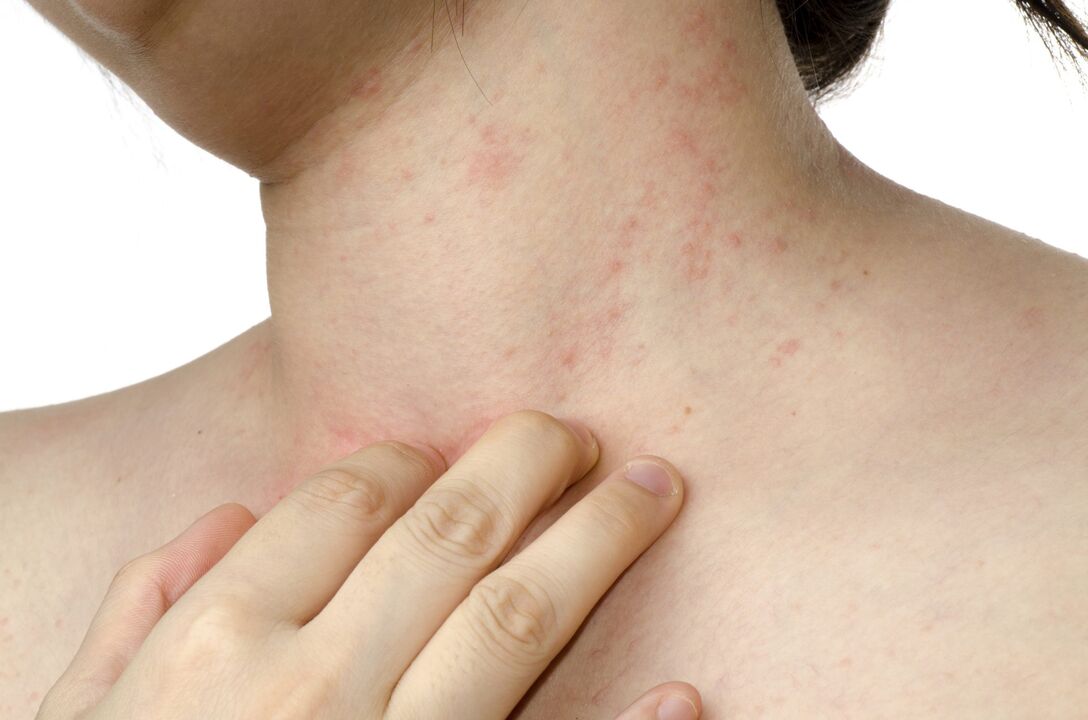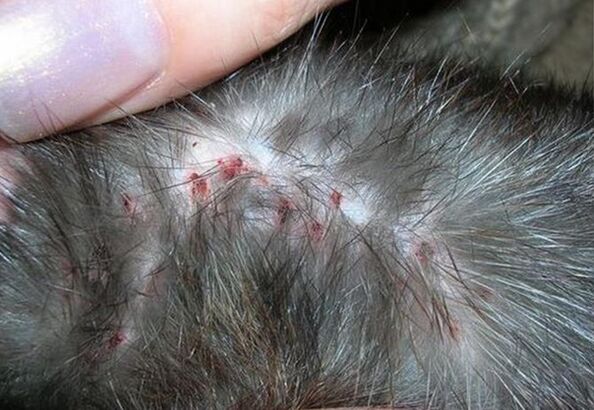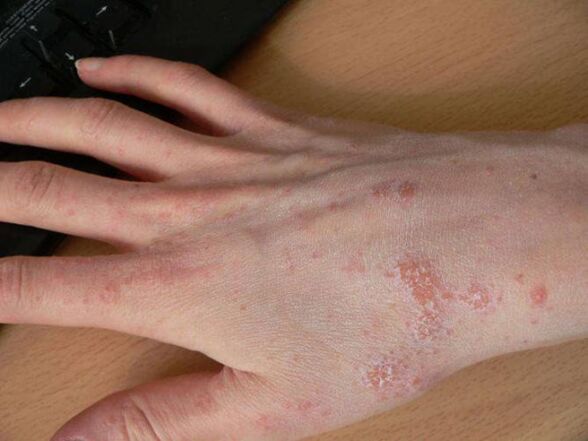
There are some protozoa that can only exist in the host body. For most of them, the main carrier is people. And once they have entered the human body, these organisms can live anywhere, but subcutaneous parasites are considered the most common. It is they who bring the most unpleasant moments, including the development of complications, and therefore, at the first sign of infection, it is necessary to consult a doctor.
Types of parasites that live under the skin
At its simplest, the main carrier is a person, divided into two main groups:
- Skin
- Subcutaneous.
The first includes insects such as: lice, fleas, bedbugs. They live in a person's hair and skin, feed on that person's blood, and can carry various dangerous diseases. However, skin parasites are considered less dangerous than subcutaneous parasites. The second species, which lives in human skin, not only eats its cells but also gives birth to their offspring inside it. Therefore, dealing with skin parasites in humans is much more difficult than with skin parasites.
Many protozoa and helminths live under the human skin, which can lead to the development of various diseases, such as:
- Heartworm disease
- Dracunculiasis
- schistosomiasis
- Thornhead Worms
- Large liver fluke disease
- Scabies.
And the most frustrating part of this is that it is often difficult to make an accurate diagnosis, since the symptoms of such diseases often resemble a common allergic reaction. Therefore, it takes a long time to treat dermatological diseases.
To give you an idea of what types of skin parasites a person might have and what it looks like, let's look at the signs of infection with each of the above.
Heartworm disease
This species does not live in our country, but they are very susceptible to infection when they reach Africa, South America and Asia. Infection occurs when a person is bitten by a blood-sucking insect, such as a mosquito. About the incubation period, in this type of dermatology can be up to 7 years.

The initial symptoms of this parasitic skin disease are usually low-grade fever and hives, and are often overlooked.
And after only a few years the skin begins to appear:
- sores
- Warts
- nodules
- papules.
Over time, eczema can develop. In some cases, they may be accompanied by mild malaise, headache, and fever, which allows us to conclude that the patient has filariasis. This disease is caused by filamentous nematodes.
But if measures are not taken in time, skin diseases caused by parasites can lead to complications in the form of joints and problems with vision.
Using mosquito repellent will help prevent infection. By treating open areas of skin with it and thus protecting yourself from the bites of blood-sucking insects, you will protect yourself from getting infected with filariasis.
Dracunculiasis
This disease is caused by a roundworm under the skin - guinea worm. The adults of these parasites that live under the human skin can reach more than a meter in length. A feature of this species is that not only a person can be a carrier for them, but also domestic animals: cats, dogs. These parasites are most commonly found in Central Asia.

Guinea worm larvae enter the human body by eating raw, untreated water. After 2 weeks, they begin their journey through the body of the carrier, and after 1. 5 months, they penetrate into the subcutaneous regions. Larvae will develop into adults after only one year.
The symptoms of rishta virus infection are difficult to confuse with other illnesses. Initially, a persistent swelling appears on the skin in the area of \u200b\u200b the lower leg, resembling a small lace. Then a bubble forms in its place, inside which are helminth eggs. And when there is water in, it will break open, allowing new larvae to enter the environment.
If you do not start treating the disease in time, then complications will appear in the form of:
- Arthritis
- gangrene
- Sepsis, which is caused by an abscess forming on the skin.
As for the fight against this human skin parasite, it consists in removing it from the skin tissues. Furthermore, this process can take several days if a large individual is present in the patient's body. The only condition is not to break the worm.
To avoid infection with filariasis, drink only water that has been disinfected and do not swim in open water.
schistosomiasis
This disease is also caused by worms. They live in the waters of Asia and Africa, so swimming in them puts you at risk of infection. This type of worm not only parasitizes on human skin but also in genital organs. At the initial stage of development, the disease manifests as a rash, itching, and inflammation of the skin. In the future, signs of kidney and liver damage may increase.
This disease is treated with antimony-based drugs. But you better avoid infection by following simple rules: refuse to bathe in standing water and use only boiled water.
Thornhead Worms
These parasites enter under the skin through cracks in the soles of the feet or wounds on other parts of the body. But most of them still affect the lower extremities and stay there without moving throughout the body.
Strongyloidiasis is manifested by the following symptoms:
- severe itching in the place of the parasite;
- changes in the skin;
- the presence of anemia.
The most annoying thing about infection is the fact that it is quite difficult to treat, and it is not always possible to achieve a satisfactory result.
Large liver fluke disease
Tapeworm larvae can also parasitize human skin. The main habitat of these parasites in the human body is the internal organs, where they enter with food or water contaminated with helminths. However, cases where they develop under the skin are not uncommon and there they can live for many years.
Symptoms of a helminth infection are swelling and lumps where the parasites have entered. Over time, they thicken. In rare cases, the infection may be accompanied by a rash.

The only way to get rid of them is to surgically intervene in the complex and take antiparasitic drugs.
Scabies
This disease is quite rare today, but literally 50 years ago it was one of the most common of the diseases caused by parasites. Its appearance is due to the subcutaneous penetration of a microscopic scab mite. Moreover, it prefers to live in the deep layers of the skin, where it feeds on the epithelium and lays eggs in it.
The life cycle of an adult is no more than two months. But during this time, the female manages to lay more than a dozen eggs. Usually, fleas affect the hands, folds, armpits, soles of the feet. But it can also be found on the mammary glands and genitals.

This parasitic infection leads to the development of scabies, which is identified by obvious signs, such as clear, scaly patches at the places of scratching, a rash, itchiness, and more intense at the point of scratching. night. If left untreated, scabies can lead to the development of dermatitis and eczema, which are aggravated in the fall.
Such a disease is treated with sulfuric ointment or hydrochloric acid solution and the use of sulfuric soap. For extensive lesions, antibiotics may be indicated. But to avoid reinfection, it is necessary to boil the clothes and clothes of the sick person and then iron them with a hot iron on both sides. Therefore, it will be easier to observe personal hygiene and avoid contact with infected people - this will help not to get sick.
Identification and diagnosis of subcutaneous parasites
Usually, you can determine if a person is infected with the naked eye. However, in any case, the patient will also be assigned an examination, which helps to more accurately determine the location of the lesion and the number of parasites.
Diagnosed parasitic skin diseases:
- Take a scrape and a stain from the mucous membrane;
- Blood test for the presence of antibodies in it.
And only after receiving the full results, the doctor can determine the treatment regimen and prescribe drugs that can kill the parasites.
The method of treatment depends on the type of disease. In some cases, surgery may even be required. But usually it can be resolved with the use of different medicines.
Disease prevention
Since removing some helminths from the human body can take several years, it is easier to prevent skin diseases caused by parasites. To do this, avoid drinking raw water, undercooked meat products and close contact with infected people.



































